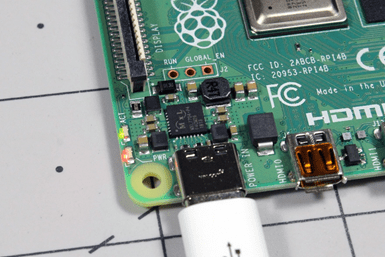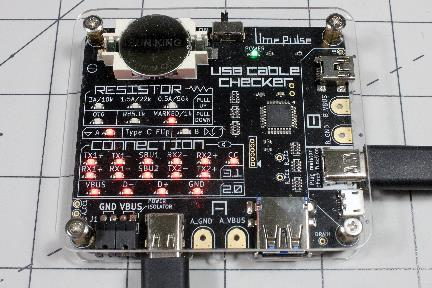The USB-C officially turns five years old. This specification makes the USB reversible and packs 24 connectors into its 2.6 mm (.1 in) high metal frame. Not only can it act as a charging and data transfer cable (both at increased speeds) for traditional computing devices and accessories, but you can also use it for video transmission or as an analog audio jack.
In other words, it's a cable standard that aims to do all things for everyone, now and in the future. And therein lies the rub. While traditional USB cables have four total connections for both power and data, USB-C has up to 24—six times that of its predecessor. To transpose a catchphrase into the electronics world: with great configurability comes great design and testing responsibility.
Early USB-C Problems
With the promise of exciting new capabilities, it wasn't long before manufacturers announced devices that would feature the USB-C:
- March 2015: Google's second-generation Chromebook Pixel Notebook
- August 2015: Chinese manufacturer LeTV's smartphones
- September 2015: Google's Pixel C tablet
During this time, smaller aftermarket accessory makers were also quick to implement products for USB-C, but their cables weren't always up to par.
Google Engineer Benson Leung, who worked on the Pixel C tablet, tested many of these cables with mixed results. His experiments came to an early end when a bad USB cable crippled his 2015 Chromebook Pixel. Leung might have avoided this tragedy by using a fool's diode, but shoddy construction is still disappointing.
As I reviewed stories from this not-so-distant era, legacy USB-A to USB-C cables were often to blame when these problems occurred. To be fair, USB-A to USB-C cables and power supplies were even less common than they are now. As the market has matured, it appears manufacturers are building their cables more reliably.
Nintendo Switch USB-C
In late 2016, Nintendo announced the innovative dual-role Switch console, which functions as a TV gaming device and a portable console with its own display. It includes a docking station and a USB-C charging cable AC adapter for power supply. The Switch itself plugs into the base station with its own USB port, both charging and passing along video signals to the dock's HDMI output.
This clever setup highlights USB-C's versatility, especially when you're on the go; users can plug in a USB-C power supply to the console directly for more juice. Unfortunately, many USB-A to C cables didn't work correctly (again). As an answer, Nintendo recommended its own "HAC-010" Nintendo A to C adapter for portable power. The only problem was the lack of a 56k resistor in some aftermarket cables, which didn't allow for proper charging. Nintendo is now rolling out new versions of the console, so we'll see if they're past the growing pains.
Raspberry Pi 4 USB-C Problems
Fast-forward to today—August 2019—and the USB elephant in the room is the Raspberry Pi 4 USB-C connector's improper design. Ironically, the "poor cables" problem has come full circle―the Raspberry Pi 4 works with cheaper "basic" cables, but more advanced e-marked cables don't supply power.
The problem boils down to improper resistor wiring on the configuration channel pins (CC1 and CC2). This wiring shorts the two pins together, creating a configuration doesn't allow for the cable to supply power.

Image: Jeremy S. Cook
Pi 4 USB-C Fix: Testing and Takeaways
Is this whole issue simply a mountain made from a molehill? While the device appears to be safe to use with compatible USB-C cables, you'll have to use the cheaper kind. To illustrate this point, I put my collection of USB cables to the test with a Pi 4. Here are my results:
|
Cable Type |
Tech |
Successful Power Transfer? |
|
AmazonBasics C to C |
2.0 |
Yes |
|
Anker PowerLine II C to C |
3.1 Gen 2 |
No |
|
USB Micro A to B/C Combo |
2.0 |
Yes |
|
GoPro A to C |
2.0 |
Yes |
|
Coral Accelerator A to C |
3.0 |
Yes |
|
Lenovo Yoga 3 Charger |
Charger |
Yes |
- I used C to C cables with a 3.0A USB-C adapter.
- The USB to C cables plugged into a 2.1A USB-A adapter, which is lower than the recommended 2.5A current rating, though it appeared to work.
- The only test qualification was whether the Pi's lights came on.
In my testing, five out of six USB-C cables in my motley collection worked without issue. The only cable that didn't work sells for about $20 on Amazon as of this writing, and I purchased it for the sole purpose of testing for this article.
The good news is you don't have to buy an expensive cable to use the Pi 4. However, if you have high-end or power-hungry devices, your cable might not work.
Will these USB-C issues create a problem for you? Probably not. But if you have some patience, Raspberry Pi co-founder and CEO Eben Upton says he expects this issue to be fixed in a board revision in the next few months. On the other hand, like that baseball card that "just happens" to have misspelled a famous player's name, perhaps it's time to stock up on this future collectible before it's gone.
Conclusion: The USB-C Solution

Image: Jeremy S. Cook
USB 3.1 Gen 2 cable on a test stand, displaying a wide range of connections
Is USB-C the physical standard we've all been waiting for? After wasting precious minutes of my life plugging in connectors incorrectly, I'd say yes. Is it also complicated and likely to cause compatibility problems in the future due to its insufficient cable labeling? Absolutely. Of course, labeling wouldn't have prevented Raspberry Pi's issue or Leung's fried Pixel.
In the end, it's a complicated spec with confusing directions. However, hopefully we'll soon get to a point where we can plug things in and expect them to work. Now, if I can only find somewhere to attach this D-sub connector.


